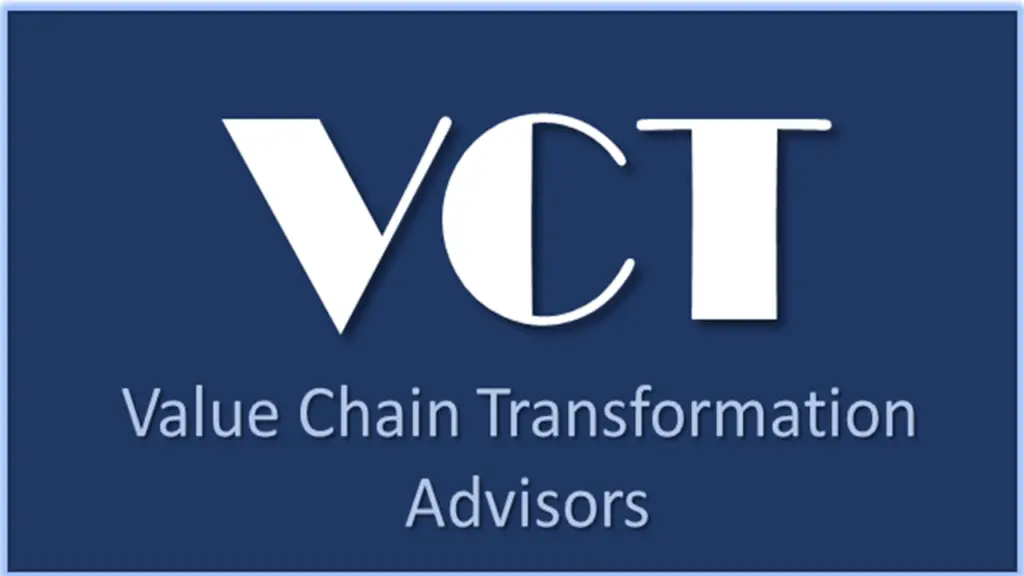Execution is the riskiest phase of a strategy because any misstep results in tangible costs. But what if you could reduce that risk by testing and refining your plan several times in an experimental setting before taking action?
Digital twin technology lets you test your strategy without risking actual resources through a real-time replica of your supply chain. In fact, 69% of organizations currently use the technology to simulate and optimize complex multivariable problems, making it indispensable for supply chain optimization.
What is a Digital Twin in the Supply Chain?
A digital twin in the supply chain is a virtual replica of your physical supply chain. A digital twin uses real-time data and simulation to improve visibility, predict issues, and optimize processes for better decision-making. As a supply chain professional, you can subject your digital twin to multiple scenarios, such as disruptions or shifts in demand, to assess the effects and identify potential problems.
Unlike before, digital supply chain twins are no longer exclusive to big corporations. The reduced cost has made digital twins accessible to small- and medium-sized businesses. This increased accessibility is driving market growth, with the supply chain digital twin market expected to hit $8.7 billion by 2033, growing at an annual rate of 12%.
Understanding the Core of Digital Twin Technology
On average, supply chain disruptions cost organizations 45% of one year’s profits each decade. Businesses recognize this risk, with 89% of executives identifying it as the most significant short-term risk and 43% increasing investment in supply chain resilience.
To that end, deploying digital twin technology helps you gain actionable insights to improve supply chain management. But how do you create a virtual replica of your supply chain?
Creating a Virtual Supply Chain Mirror
A digital twin functions as a living mirror of your supply chain, providing a dynamic, data-driven view of operations as they unfold. Unlike traditional simulations that rely on historical data, digital twins integrate real-time insights for proactive supply chain management.
This means that your digital twin connects to the company’s systems and integrates all data flows and sources to provide end-to-end visibility into your supply chain.
Real-Time Integration with IoT and Data Systems
Your data-driven supply chain replica will include a digital twin simulation model that integrates with:
- IoT sensors and tracking systems that provide live data on inventory, shipments, warehouse conditions, and transit status
- Business software, such as supply chain management, enterprise resource planning (ERP), business intelligence, and transportation management for smooth data flow
- Artificial intelligence (AI) and predictive analytics to detect inefficiency, forecast scenarios, and recommend improvements
- Edge and cloud computing to allow real-time data processing and system-wide updates
With the integration, your digital twin will capture data from all facets of your organization’s supply chain processes to mimic your physical supply chain. Based on the collected insights, you can experiment with different scenarios and accelerate decision-making.
The Role of IoT, AI, and Machine Learning in Digital Twin Development
IoT, AI, and machine learning work together to create a dynamic, data-driven twin, but each plays a unique role.
The IoT Connection
IoT connection is the foundation of a digital twin because it bridges the physical and virtual worlds. IoT devices such as sensors, RFID tags, GPS trackers, and smart meters collect real-time data on:
- Assets: Track the movement and status of goods, machinery, infrastructure, and fleet vehicles.
- Inventory: Monitor stock levels in warehouses and distribution centers to prevent overstocking or shortage.
- Transport: Provide live updates on shipments, delivery routes, transit conditions, and logistics networks.
- Equipment performance: Measure machine health, wear and tear, and predict maintenance needs.
- Environmental conditions: Check if products are stored and transported under optimal temperature, humidity, and pressure conditions.
The IoT devices then feed the collected data to the digital twin model for analysis and decision-making.
AI and Predictive Analytics
Once the data from IoT devices and business software enters the twin system, AI and predictive analytics process it to extract actionable insights. Instead of only reflecting the current state of your supply chain, AI and predictive analytics analyze historical patterns and real-time inputs to predict future outcomes.
Take, for instance, a forecast of demand fluctuations. AI can assess past sales trends, seasonal variations, and macroeconomic indicators to help you accurately forecast demand and prevent stockouts or overstocking. It can also identify potential disruptions by detecting irregularities in supplier performance or production schedules so that you can take proactive measures before issues escalate.
Machine Learning for Continuous Improvement
Machine learning allows digital twins to evolve by continuously learning from new data. As the supply chain operates, machine learning algorithms analyze past performance to recognize patterns and continually refine the decision-making process. Such adaptability ensures the virtual representation of your supply chain becomes more accurate with each iteration.
Benefits of Digital Twins in Supply Chain Optimization
Adopting digital twin technology in supply chains unlocks critical advantages and reduces reliance on outdated institutional knowledge.
Improved Decision-Making
Digital twin technology gives your business a virtual, updated overview of your supply chain. Such visibility allows managers to make quick, informed supply-chain decisions and gives decision-makers the agility to respond to changing conditions.
Enhanced Supply Chain Resilience
With increasing supply chain volatility, you must continually update your policies to meet shifting demands and intermittent supply shocks, such as geopolitical disruption and raw material shortages. A digital twin provides real-time insights into granular performance, enabling you to simulate various disruption scenarios and develop contingency plans.
Optimized Operations
Because a digital twin gives deeper visibility into your supply chain — from sourcing to delivery — you can test different strategies to make more intelligent supply chain decisions. A digital twin allows you to analyze various processes, including routing strategies, production schedules, and supplier networks. These tests help you identify the most efficient approaches without disrupting actual supply chain operations.
Increased Efficiency and Reduced Cost
Another significant advantage of a digital twin in supply chain management is its ability to identify inefficiencies and optimize processes. With AI-powered analytics, your business can identify bottlenecks, minimize waste, and optimize resource allocations for better cost control. Predictive maintenance helps prevent unexpected equipment failure, reducing downtime and costly repairs.
Unmatched Customer Experience
Anticipating demand fluctuations lets you optimize your inventory levels to meet customer needs and minimize stockouts or delays. As such, you can ensure customers have the right products in the right place at the right time to improve their experience with your organization. AI insights also help personalize offerings to enhance customer satisfaction.
Real-World Applications of Digital Twin in Supply Chains
Digital twin technology is actively reshaping supply chains across industries. Organizations, from global manufacturers to logistics companies, use digital twins to optimize production schedules and reduce transportation delays.
Demand Forecasting
Retail giants like Walmart and Amazon use digital twins to accurately forecast demand. Their replicas analyze real-time sales data, weather conditions, previous patterns, and macroeconomic indicators to predict demand. Based on the data their twins collect, the companies adjust procurement and inventory strategies accordingly to avoid stockouts or excess inventory.
Inventory Management
Siemens has implemented a digital twin supply chain to track inventory across its global supply chain, reduce material shortages, and optimize stock levels. The company integrates IoT sensors and AI to ensure production lines receive the right material on time and minimize downtime and excess storage costs.
Transport Optimization
DHL uses digital twins to simulate delivery routes. The replicas factor in real-time traffic, fuel costs, and weather conditions to:
- Optimize routes
- Reduce transportation expenses
- Improve delivery times
- Ensure efficient last-mile logistics for e-commerce and retail clients
Warehouse Management
Procter & Gamble has digital twins to improve warehouse efficiency by optimizing storage layout and automating fulfillment processes. Their AI-driven models simulate various order-picking strategies to help them reduce processing time and reduce operational costs.
Supply Chain Network Design
Automakers, such as BMW and Ford, optimize their global supply chain networks using digital twins. With the replicas, they can identify the best locations for suppliers, warehouses, and manufacturing plants to mitigate risk and improve overall supply chain agility in response to disruptions.
Challenges of Implementing Digital Twin Technology
Although digital twins have a lot to offer your company, there are some implementation challenges you want to pay attention to:
High Implementation Cost
The initial investment in infrastructure, software, IoT devices, and expertise can be substantial. Before implementing the technology, compare the initial investment with cost savings from increased productivity, decreased downtime, and improved predictive maintenance.
Integration with Existing Systems
Connecting digital twins with existing legacy systems can be complex. However, you can overcome the integration problem using APIs or system upgrades. The right solution can provide you with effortless integration without interfering with normal business processes.
Data Security and Privacy
Digital twin supply chain systems are lucrative targets for cyber attacks because they handle massive volumes of valuable data collected from all facets of your organization. To protect data integrity and privacy, it’s imperative to deploy robust cybersecurity measures.
GAINS’ Innovative Solutions: Unleash the Full Potential of Your Supply Chain
The future of digital twin technology in supply chain management is promising. At GAINS, our continuous network flow optimization (CNFO) technology will help you transform your supply chain digital twin into a real-time decision engine.
With AI and machine learning capabilities, our CNFO will help you deploy rapid strategic adjustment and continuously refine key supply chain strategies. You can then respond to disruptions faster, manage inventory more efficiently, and optimize logistics.
Request a demo today to learn how GAINS’ CNFO can improve your digital twin.



